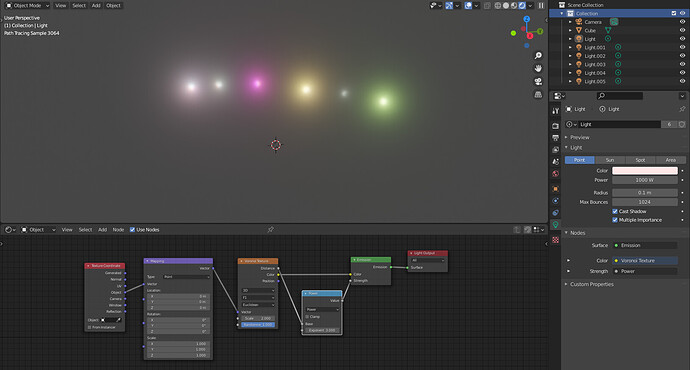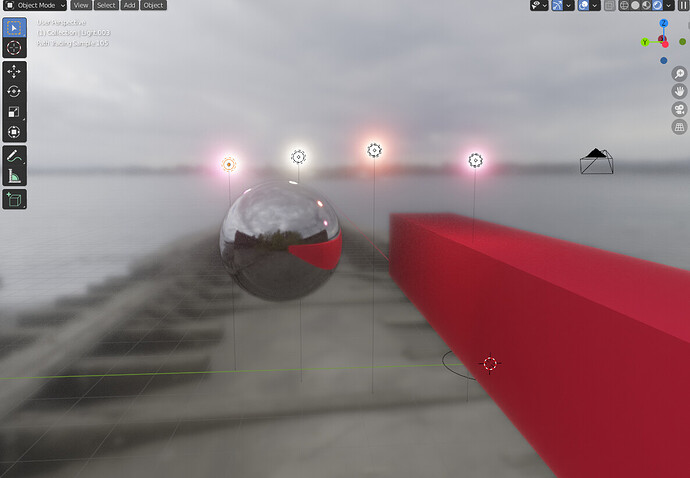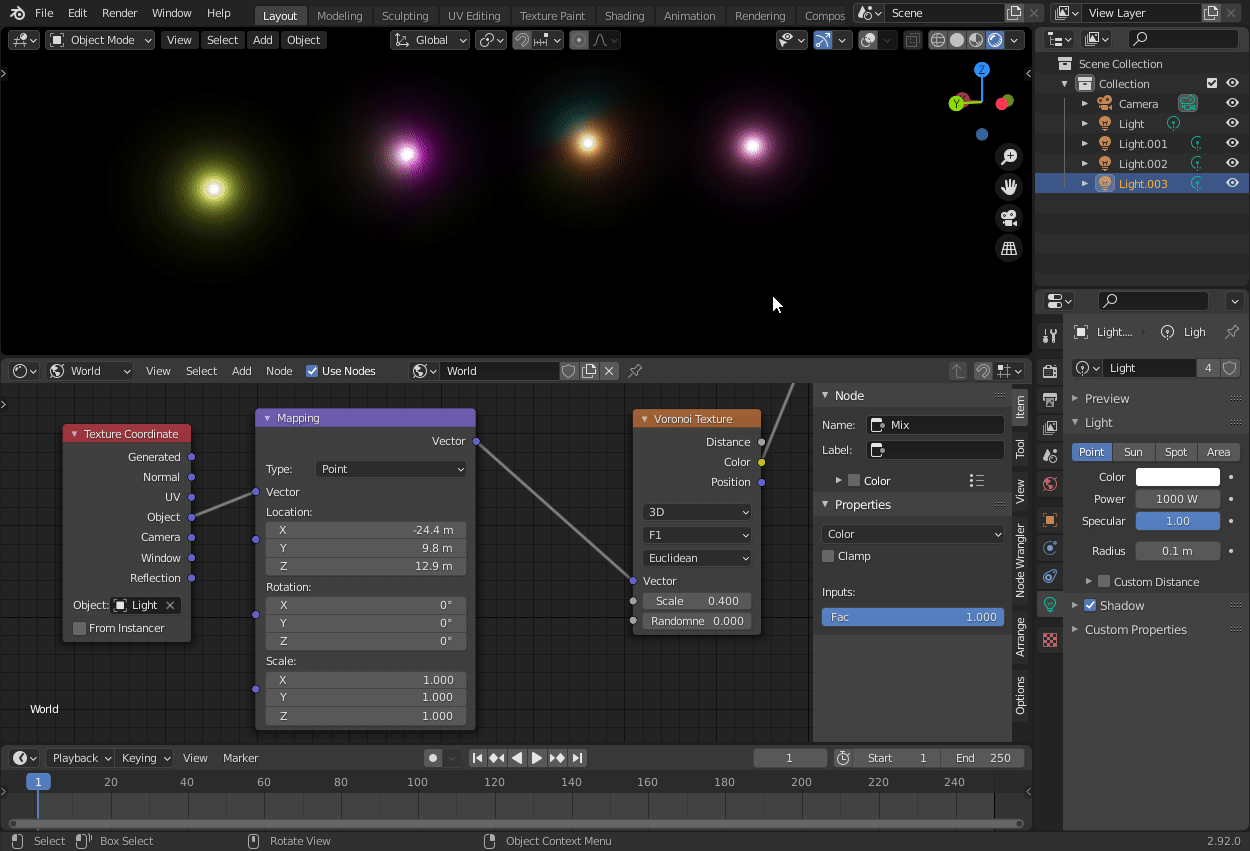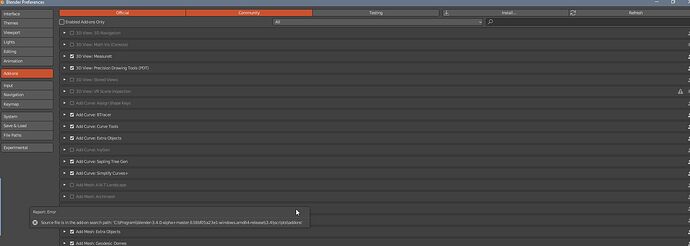Can´t specify it properly really, just experimenting of how flexible it would be.
Luxigons is a bit different, It´s Not applied by vertices in modeler, but polygon normals.
besides, you can´t use that method for particles in a scene in lightwave, and as mentioned…not able to put it on points makes it less useful in some cases, and I don´t think it would follow displacements either.
using nodal motion cloning (bryphi77) has some tutorials on that on youtube, is one way to go, or fx linking.
Just learnt a bit about the cloning of lights now in blender, converting to instances to real lights,(ctrl-a) so each light per vertices cloned can be accessed (which it can´t if just instanced)
However, trying to change intensity or color will still have the instance connection …so if you change on one light no matter which you choose, all the others will change the same, so you would need to make each light a single user , in display numbers of users of this data and click on the number to make a single user copy, which will allow for changing colors and intensity per light.
So far I got that covered and solved.
Further experiments would be to control light color and perhaps intensity en masse, by using fractals or other nodal settings, but it would need to adress all lights at once by a fractal map to give variance to all lights based on that map, or proximity to other objects.
hard to describe real scenarios since it´s experimental motion graphics more of than a true live case scenario.
I will try and give you some descriptions later when I know how to formulate it.
One potentional candidate would be a huge U.F.O over devils tower with a lot of color lights , changing colors when the lights are moving around the ship, or based on sound/music.
Love how sweet it is to use volumetric background in eeve and have point lights shimmer in realtime, if set right the volumetrics is hardly visible but only serving as bloom glow for the lights, of course you could try with instancing emission surfaces and bloom instead, but that is a bit different.
so what I kind of would like to do now is simply to control each lights color, but not having to individually go in and do that, but instead being able to control each light´s color by a map, or proximity or similar, perhaps not possible yet.
The new animation or geometry nodes I haven´t checked up that much on though.
It all starts with a cube apparently, like a true blender philosophy/practice
…







